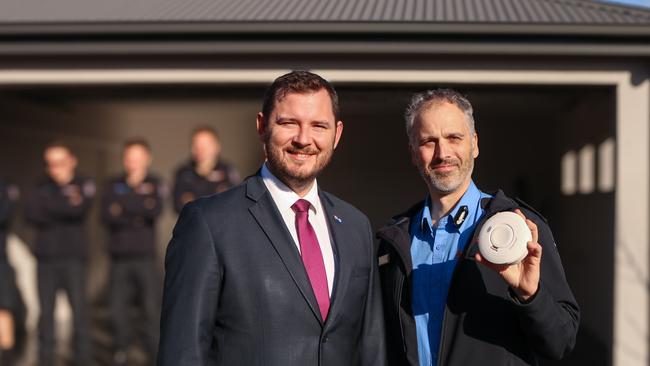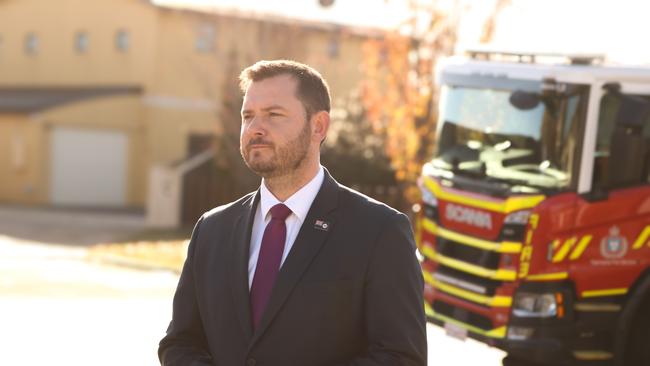Fire authorities warn of increase in lithium-ion battery-related blazes
Fire authorities issue renewed fire safety warnings in the wake of a fatal house fire at Sidmouth on Sunday. The simple steps experts say can protect yourself and family >>

Tasmania
Don't miss out on the headlines from Tasmania. Followed categories will be added to My News.
There are renewed fire safety warnings in the wake of a fatal house fire at Sidmouth on Sunday, which left one man dead and a female injured.
The cause of the fire at Collins Lane is yet to be determined, and an investigation is underway.
Fire authorities say while the most common causes of house fires remain cooking and heating, cigarettes and candles, and electrical issues, there is growing concern over the rise in lithium-ion battery-related blazes.
Tasmania Fire Service community fire safety acting director Chris Collins said since 2019, lithium-ion batteries have caused five fires.
“Fires in the home can be devastating, if not fatal. Every year, we see loss of life from house fires, and we’re seeing more fires from lithium-ion batteries,” he said.
“However, there are simple things that the community can do to prepare and protect themselves, their family, and their property from fire.
“We recommend installing smoke alarms in every bedroom, hallway, and above stairwells. We’re also recommending that smoke alarms are installed in garages and in places where lithium-ion batteries are stored and charged.”
Mr Collins said the batteries risk exploding if overcharged, overheated, damaged, or poorly made.
“Lithium-ion batteries are a novel and new technology that stores an immense amount of power within a small area, and when exposed to the air, or when under fault or overcharged, these devices can quickly overheat, undergo a chemical reaction and combust violently and explosively and can be very difficult to extinguish,” Mr Collins said.
The state is seeing more fires because so many appliances use some kind of lithium-ion battery, Minister for Police, Fire and Emergency Management Felix Ellis said.
“Lithium-ion batteries are so prevalent,” Mr Ellis said.
“They’re found in many rechargeable devices, electric vehicles, e-bikes, power tools, and many other devices, and are in emerging fire risk.”

Mr Ellis said fire safety was crucial for all Tasmanians, with the TFS responding to about 350 house fires each year.
“The TFS is very busy between May and September, particularly when it comes to house fires,” he said.
“So we’ll be launching an education campaign so that we can better protect the community and help them make the preparations that they need to make so that they can protect their homes and properties.”
Meanwhile, a wood heater catching a couch alight in Berriedale has sparked another warning.
Station Officer Sturt Peel said the fire on Monday morning was caused by the radiant heat from the fire — and fortunately was doused before the two residents evacuated safely.
The incident caused some damage to flooring, a coffee table and couch.
Acting Director of Community Fire Safety Chris Collins said radiant heat from wood, gas and electric heaters remained the leading cause of house fires, especially during winter.
“Every winter we see a large rise in the number of fires, mostly due to the increased use of heating equipment and extra cooking,” he said.
Simple precautions to prevent house fires:
* Keep flammable materials at least 2m away from heaters.
* Create and regularly practice a home fire escape plan.
* Ensure working smoke alarms are installed in all key home areas.
* Have both a fire extinguisher and fire blanket in the home.
Originally published as Fire authorities warn of increase in lithium-ion battery-related blazes



